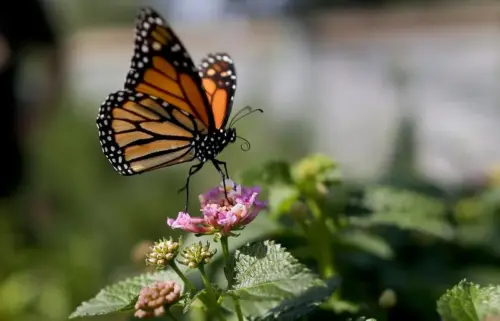Saving animal habitats could save us from the next pandemic: studies
By Alexandra Mae Jones
Click here for updates on this story
TORONTO (CTV Network) — Protecting wildlife and their habitats isn’t just a a way to help other species — it could save humans from animal pathogens like the one that’s widely believed to have caused COVID-19, according to two new studies spanning decades of research.
Australian researchers studied the patterns of fruit bats and found that when they had abundant food and natural habitats to live in, there was significantly less risk of dangerous viral shedding.
However, their natural habitats have been declining due to climate change and human clearing of forests, according to researchers, potentially upping the viral risk for us.
Several zoonotic viruses that have made the jump from animals to humans originated in bats, as many believe to be the case with SARS-CoV-2, the virus that causes COVID-19, as well as the Nipah virus and the Hendra virus.
Often, we see environmentalism and conservation as separate from the question of human health, but the solutions to both may be intrinsically connected, researchers suggest.
“Right now, the world is focused on how we can stop the next pandemic,” Raina Plowright, professor in the Department of Public and Ecosystem Health in the College of Veterinary Medicine at Cornell University and senior author of both studies, said in an article released by the university.
“Unfortunately, preserving or restoring nature is rarely part of the discussion. We’re hoping that this paper will bring prevention and nature-based solutions to the forefront of the conversation.”
The first study, published Wednesday in the scientific journal Nature, combined data spanning 25 years in order to create a detailed picture of the behaviour, reproduction, health and movements of fruit bats in subtropical Australia.
The second study, published at the end of October in the journal Ecology Letters, built on data used in the Nature study in order to pinpoint ecological conditions connected to more or less shedding of viruses by bats.
Put together, the two studies paint a clear picture: when the bats had a healthy natural habitat and plenty of food, the risk of virus spillover went down.
Researchers looked at data from 1996 to 2020. To compare the bat behaviour to the external factors of their environment, researchers ensured the datasets included the landscapes in which bats were foraging, the climate trends over the 25 years of data, as well as which years had food shortages and which years contained forest loss in regions the bats relied upon.
They then laid the data on bat behaviours and climate factors next to how much virus the bats were shedding over this time period.
To measure the risk of animal pathogens to humans in connection to the changes in the bats’ lives, researchers focused on one specific viral vector: Hendra virus (HeV) moving from bats to horses to people.
HeV is a rare disease first identified in 1994 that can be fatal in both humans and horses. All cases that have ever been studied occurred in the northeastern coast of Australia, with the virus originating in fruit bats before jumping to horses and finally to humans who took care of infected horses.
Researchers observed that after an El Nino event, in which high temperatures in the Pacific Ocean affected the environment, trees the bats usually turned to for nectar were unable to produce flowers. This, combined with human clearing of forests, meant a food shortage for the fruit bats.
When this happened, the bats were forced to split into smaller splinter groups and move to agricultural and urban areas to feed on different food such as fig and mango.
Splitting into smaller groups and feeding on food sources that were less nutritious than the nectar that usually made up most of their diet created more opportunities for virus to fester and spread among the stressed bats, according to the study.
In total, there were around 40 HeV spillovers from bats to horses during the study period.
The Ecology Letters study found that bats suffering a food shortage also were shedding more virus, possibly as a side effect of trying to conserve more energy.
The fact that the fruit bats often relocated to agricultural areas in search of food when their natural habitats were disrupted facilitated more transmission because it brought the bats closer to the horses, which allowed HeV to make the jump from bats to humans.
One event seemingly cemented the connection regarding habitat and food that researchers were observing.
An unexpected bloom of eucalyptus trees drew large numbers of bats to that area, and while these trees bloomed, the pathogen spillover stopped completely, according to the studies.
“We put these data into the network models and found that we could predict spillover clusters based on climate, the availability of food, and the location of bats,” Plowright said. “We show that when remaining habitat produces food, spillover stops, and therefore a sustainable way to stop these events could be to preserve and restore critical habitat.”
Although bats have relocated to agricultural and urban areas before in response to short-term issues with food and habitat, what were transient responses in the past are increasingly becoming habits shaped by long-term environmental changes, researchers found.
There has been a growing trend of more and more smaller agricultural and urban groups of bats since 2003, with bats returning to their natural habitats in smaller numbers as the years go by.
“This could be because forests that provide nectar in winter have been extensively cleared,” the article stated.
Please note: This content carries a strict local market embargo. If you share the same market as the contributor of this article, you may not use it on any platform.
Sonja Puzic

